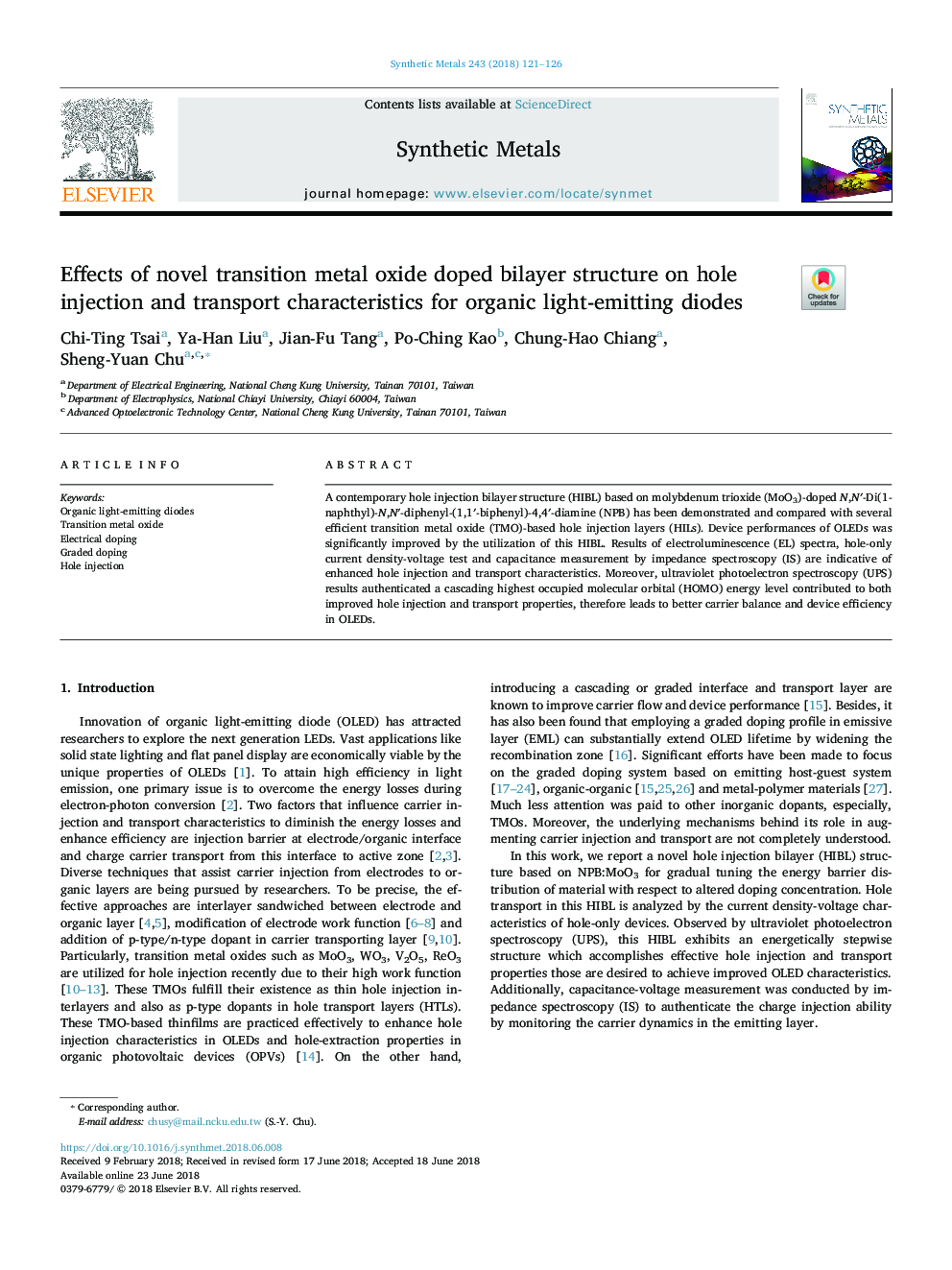| Article ID | Journal | Published Year | Pages | File Type |
|---|---|---|---|---|
| 7873435 | Synthetic Metals | 2018 | 6 Pages |
Abstract
A contemporary hole injection bilayer structure (HIBL) based on molybdenum trioxide (MoO3)-doped N,Nâ²-Di(1-naphthyl)-N,Nâ²-diphenyl-(1,1â²-biphenyl)-4,4â²-diamine (NPB) has been demonstrated and compared with several efficient transition metal oxide (TMO)-based hole injection layers (HILs). Device performances of OLEDs was significantly improved by the utilization of this HIBL. Results of electroluminescence (EL) spectra, hole-only current density-voltage test and capacitance measurement by impedance spectroscopy (IS) are indicative of enhanced hole injection and transport characteristics. Moreover, ultraviolet photoelectron spectroscopy (UPS) results authenticated a cascading highest occupied molecular orbital (HOMO) energy level contributed to both improved hole injection and transport properties, therefore leads to better carrier balance and device efficiency in OLEDs.
Related Topics
Physical Sciences and Engineering
Materials Science
Biomaterials
Authors
Chi-Ting Tsai, Ya-Han Liu, Jian-Fu Tang, Po-Ching Kao, Chung-Hao Chiang, Sheng-Yuan Chu,
